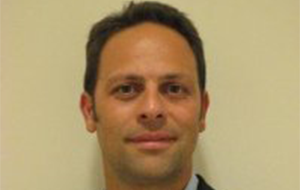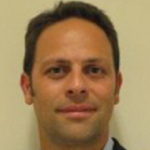Most CIOs feel overwhelmed most of the time. The pace of technological change is relentless, and demands on IT are never-ending. Meanwhile, IT budgets continue to shrink. How can an IT leader manage competing priorities? In an interview, Oded Haner, CTO of cloud management provider, Hotlink, and former CIO of Monster Cable, provides some answers.

 The Enterprisers Project (TEP): How can CIOs work with their business counterparts to determine which items really are a priority?
The Enterprisers Project (TEP): How can CIOs work with their business counterparts to determine which items really are a priority?
Haner: CIO responsibilities range from fielding simple IT requests to managing data and services used to make critical business decisions. While all tasks are important, in a zero-sum game, not all can be top priority and some projects are left out. To make the right calls, you must take a structured approach to IT governance.
Start by building a detailed list of your ongoing IT projects. Make sure the department submitting an IT request always includes the task's timeline, potential risks, and intended benefits for the business. Collaborating with your team can drastically simplify efforts. CIOs should work with stakeholders at every level of the company to outline metrics for measuring value in every IT project. Then, CIOs can ensure the metrics reflect the company's comprehensive concerns and needs.
It is also critical that before any major IT decisions are made, all business leaders involved understand and agree with the list of projects and the approach to measuring value. When the entire team is on board, the list can become your roadmap for IT project execution. On a quarterly basis, review and critique the roadmap with your team and make sure ongoing change is being measured. If needed, identify gaps and, most importantly, celebrate when projects or portions of projects are completed.
TEP: Using the cloud is one way CIOs can stretch their IT dollars. What are some best practices?
Haner: Virtualization makes it easy to make full use of future hybrid cloud advancements. CIOs need to slowly phase the cloud into their environments and make sure cloud infrastructure does not become siloed.
It's critical that all CIOs enable their teams to see, manage, administer, and maintain the new hybrid environment just as well as an on-premise virtualized environment. Applying hybrid management tactics to cloud infrastructure can offer the same benefits as virtualization did a decade ago, when it removed physical silos and improved the data center on a holistic level.
TEP: How did you manage these challenges as CIO of Monster Cable?
Haner: Leading IT through transformation is not a trivial endeavor. In my experience, every year had its challenges, ups and downs, and celebrations. As a CIO, I was always following a structured approach so I could focus on the right things and manage change throughout the business.
We held ourselves up to the expectations we created and then achieved the benefits we promised. For example, at the time, adopting virtualization was the bleeding edge — it seemed risky compared to physical dedicated servers — but I decided to virtualize our IT environment in phases. The process demonstrated economic value while providing the agility our business needed. That kind of strategic leadership was critical at Monster Cable and is still important for today's CIOs.
TEP: IT is inherently unpredictable. What are some of the ways CIOs can hedge their bets?
Haner: Today's market requires agility and continuous change, which forces IT to adapt and stay innovative. Moving off physical servers and into a virtual environment is obviously a good first step. To continue to deliver function progress, however, a flexible and cost-effective infrastructure is critical. Using public cloud services is that next step. Starting is relatively easy, and does not require much planning. Once successfully deployed, a hybrid infrastructure lets companies quickly change and respond as they grow, without ever constraining innovation.
TEP: How do you evaluate new technologies? Is it ever smart to be an early adopter? If so, how can you tell when it might be time to take that plunge?
Haner: Innovation inherently creates risks and requires an open-minded approach, which tends to fit an early adopter's state of mind. Being an early adopter of any technology is risky, but that risk can be managed. As long as technology and solutions are introduced in a controlled manner, the benefits from early deployment can outweigh any risks.
TEP: What advice would you give CIOs for managing IT in a constantly changing world, while keeping costs under control?
Haner: The key to success in a time of systemic change lies in focusing on the challenge at hand and continually measuring investments and costs against benefits. Done right, strategic planning lets a company gain a bigger slice of an existing pie while bringing new pies into reach. In a dynamic business, IT teams must see change as a challenge, calling not for compliance and stagnation but for creativity and innovation.
Change starts with the CIO leading the movement and follows at all levels of IT, and a sense of improvement and delivering value should be assessed daily. Every IT investment, whether an implemented system or an IT project under consideration, must be linked to a specific business priority. CIOs should carefully balance the project costs against a primary business value and make sure that the IT team is acutely aware of both. IT is a great innovation engine, and CIOs should use it to constantly evolve and improve the services they provide.







